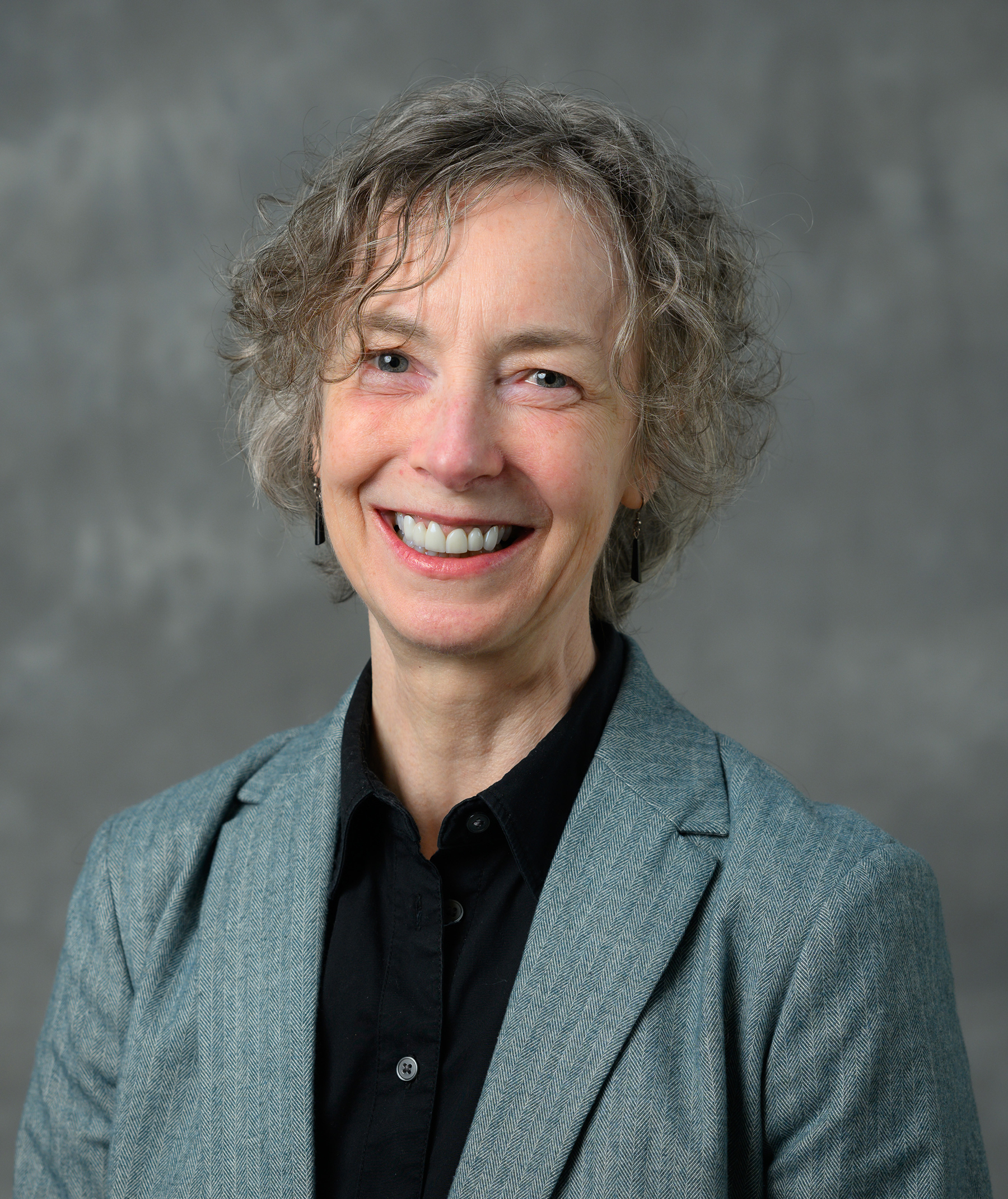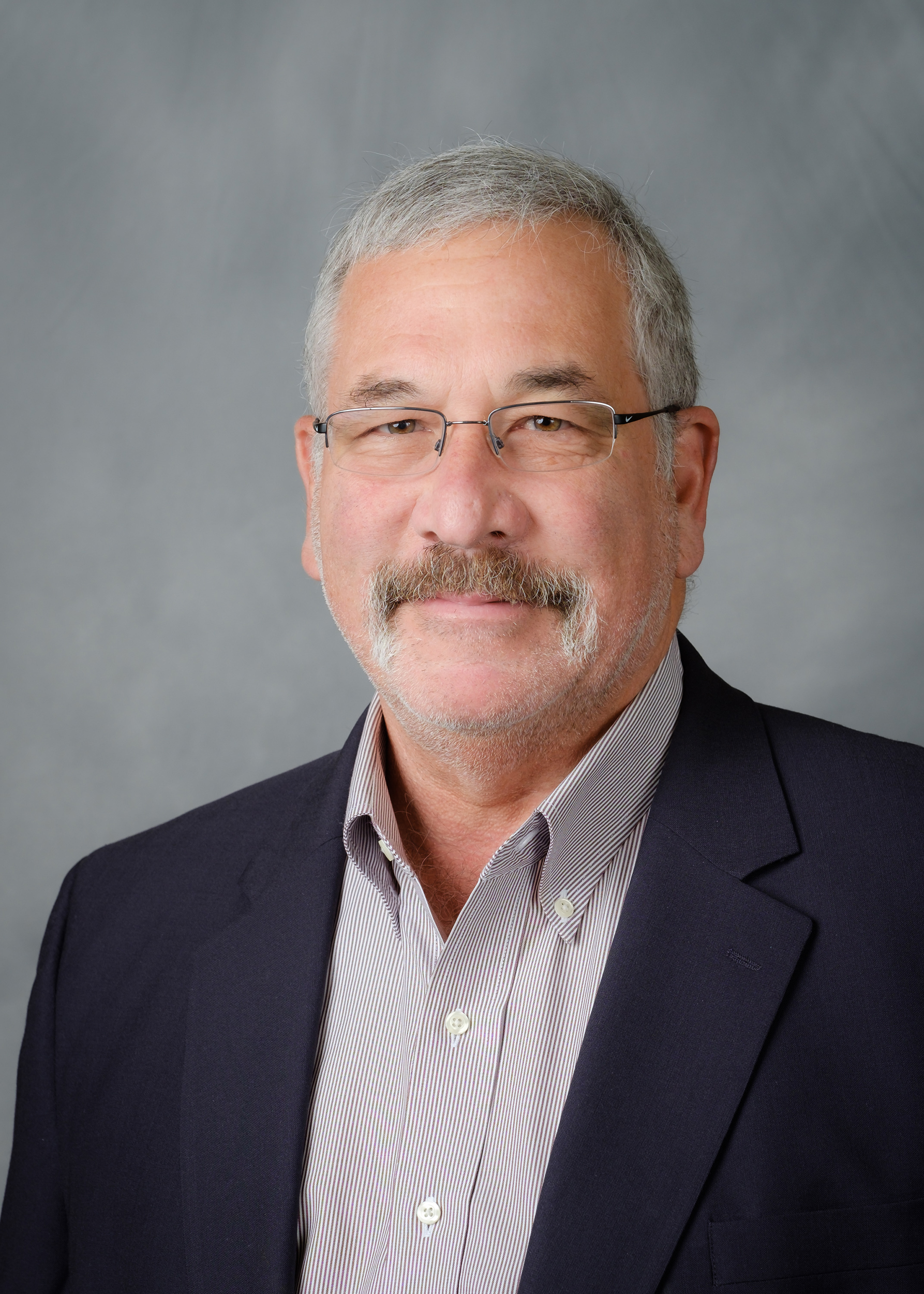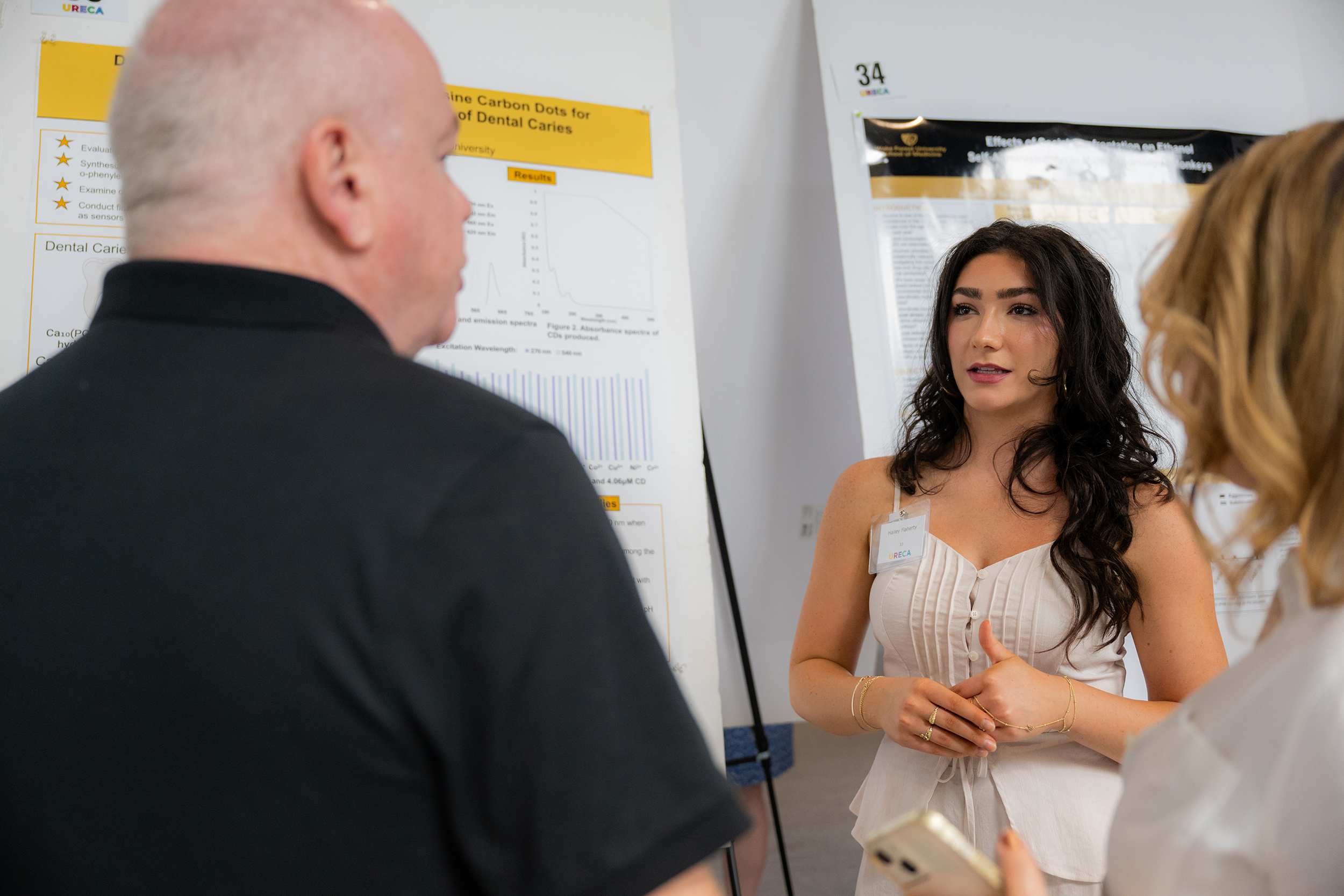Bonding Around
Beakers
By Michael Terry (’06)
Christa Colyer loved being a student. “Mrs. Knight, my high school chemistry teacher, always had her classroom open after school,” she remembers. That room was a special space where students found themselves hanging out and studying together in community. “Mrs. Knight had a genuine passion for chemistry and helped her students discover their love of the subject. It was mind-blowing to me in high school that you could love learning.” She added, “And, Mrs. Knight was glamorous. She wore high heels.”

Professor Colyer is the James and Courtenay Harton Faculty Fellow for Chemical Industry. For nearly three decades, she has been instrumental in shaping the highly personalized learning and research environment chemistry students encounter at Wake Forest. Her teaching is inspired by the experiences she gained from her mentors. Whether trying out one class or pursuing a major, Colyer said that students appreciate the connectedness present among peers and faculty in the department. Inside Salem Hall or at Wake Downtown, students gather to study and work in academic space that feels like home.
When Colyer went to college – as a first-generation student on scholarship – she found another amazing mentor in one of her professors who “noticed and wanted to help me along my path,” she said. “Professor Oldham was a model for how great mentors can be. He was always hosting international scholars, and he would invite us all to go for walks with him during lunch.”



Jim Harton (’74) believes the educational foundation he gained at Wake Forest set him up for his storied career in chemical industry. He said, “making the decision to come to Wake Forest was a turning point in my life.”

Harton traces his roots in chemistry back to his hometown high school, where his teacher and coach, Mr. Hoover, saw something in him. There, the odyssey of a lifetime began, leading Harton to Wake Forest and into a vocation that carried him across the nation and the world, over the course of a half century.
Good teachers like Mr. Hoover inspire learning that spans far beyond any classroom, school or hometown. They open doors to realms of possibility for their students and prepare them for where they are going in life. Good students acknowledge the gifts of knowledge, insight and connection they receive from their teachers – and some of them, like Harton, demonstrate their appreciation by giving back.
“Making the decision to come to Wake Forest was a turning point in my life.”
Jim Harton (’74)
At Wake Forest, Harton and his wife have endowed the James and Courtenay Harton Faculty Fellowship for Chemical Industry, in honor of Mr. Hoover. Today, their endowment gift funds a fellowship for faculty in the Department of Chemistry who ready students for futures in chemistry and the chemical industry.
When he realized that a large number of his fellow industrial chemists were approaching retirement, Harton wanted to help Wake Foresters understand that great job opportunities were opening up for chemistry majors. He decided to give students a chance to consider working in the chemical industry by establishing a fund that would facilitate a collaborative partnership between members of the faculty and Friends of Chemistry to engage students in initiatives and mentoring for career discernment.



Walking in the footsteps of Mrs. Knight and Professor Oldham, today Christa Colyer affords Wake Foresters a sense of agency and belonging in keeping what she experienced as a student. As she teaches and mentors, she makes sure her students have plenty of space for learning through experience. She stands back and observes their intellectual and social development. “I want them to know it’s about them,” she said. “The power of education is helping students to realize their potential. That makes the endeavor more than worthwhile.”
In her research lab, Colyer blends collaborative exploration with personal reflection, guiding students as they uncover their own reasons for pursuing research. Undergraduates interact with graduate and doctoral students, postdoctoral scholars, lab technicians and even high schoolers, all of whom are at various stages in their training. Peer review is built in. In the lecture hall, she gives students opportunities to turn their chairs and discuss challenging material with each other while she moves around, personally checking in with them and responding to their questions. “It’s all about teaching, learning and helping in a respectful exchange,” Colyer said. “Wake Forest provides a unique balance of teaching and research, which reinforces the quality of both. Teaching is part of the ethos of the place and all chemistry majors are required to engage in credit-bearing research.” She cited the curiosity-driven liberal arts piece as being a catalyst for transforming people’s lives, in keeping with the University’s motto, Pro Humanitate.
Speaking of Pro Humanitate, Colyer’s current research, including using carbon dots as mechanisms for detecting and measuring other substances, is leading to breakthroughs in the field of chemistry. As a separations scientist, she focuses on measuring the individual components of complex mixtures, and with the help of carbon nanoparticles, or carbon dots, the Colyer Lab is exploring capabilities for more accurate sensing, screening and separations. “Carbon nanoparticles stick to things,” she stated simply, “and the fluorescent light they give off changes when bound to other substances.” By shining a laser on carbon nanoparticles and seeing how they light up, any substances associated with the nanoparticles can be reliably detected and accurately measured. One way she and her students are working to solve real world problems is by incorporating carbon dots into a developing methodology for drug testing, though many other applications show promise. Once the domain of materials chemists, Colyer is claiming ground for analytical chemists with the help of a little carbon.




Rigorous, competitive and scholarly, the degree programs offered by the Department of Chemistry at Wake Forest are undoubtedly challenging. Whether trying out a first-year seminar or rounding out a concentration with an upper-level elective, students who choose chemistry can expect a thoroughly practical, even intense educational experience. Many majors will prepare for graduate work in the physical sciences or biomedical sciences, follow the health professions track or pursue careers in medicinal chemistry and drug discovery – and some, with the help of Harton and Colyer, will become industrial chemists.
During their time here, chemistry students can expect to work hard. So, too, can they expect to find a welcoming community that works equally hard to support their learning. At Wake Forest, chemistry is intrinsically relational.
The Harton Fund for Chemical Industry
The James and Courtenay Harton Faculty Fellowship for Chemical Industry is made possible through the generous support of Jim (’74) and Courtenay Harton, who, in 2018 established the Harton Fund for Chemical Industry in honor of Mr. J. Larry Hoover, Jim Harton’s chemistry teacher and coach at Huguenot High School in Richmond, Virginia. The Hartons desire to contribute to the future success of the chemical industry in the United States of America by supporting Wake Forest’s Department of Chemistry. Their endowment supports members of the faculty who have demonstrated a desire to prepare students for future careers in the chemical industry. Recipients of the James and Courtenay Harton Faculty Fellowship for Chemical Industry assist students in better understanding professional opportunities available to them in the chemical industry, work to sustain connections between students, faculty and alumni of Wake Forest and strive to facilitate mentoring opportunities between alumni and students. Christa L. Colyer, Ph.D. (P ’18, P ’20 MSBA) was selected for the fellowship from 2023 through 2026.
“The power of education is helping students to realize their potential. That makes the endeavor more than worthwhile.”
Christa Colyer, Ph.D. (P ’18, P ’20 MSBA)

Christa L. Colyer, Ph.D. (P ’18, P ’20 MSBA), professor of chemistry, is a beloved and highly-esteemed teacher-scholar who has served the Wake Forest community for nearly 30 years. Hailing from Canada, Colyer earned a Bachelor of Science degree with honors from Trent University and a Master of Science degree with distinction from the University of Guelph. She holds a doctoral degree from Queen’s University and completed a postdoctoral fellowship at the University of Alberta. Colyer taught at the University of Ontario Institute of Technology before joining the faculty at Wake Forest.
